None
Most users ever online was 387 on Tue Dec 05, 2023 7:35 pm
The newest registered user is Skylines3
Our users have posted a total of 47502 messages in 4941 subjects
| No user |
• The FREE hand reading services at the Modern Hand Reading Forum are being continued in 2019 with the assistance of Google adsense!

Learn how to read hands according the Modern Hand Reading paradigm & you can use this forum as your palm reading guide!
VII - REPORT: Korean researchers discovered the 'Suwon crease', only observed in males!
Modern Hand Reading Forum - Discover the language of your hands: palm reading & palmistry forum! :: III - MODERN HAND READING - Various systems for reading hands! :: IIIa - Modern Palmistry: general topics, questions :: IIIj - News that relates to the activity of reading hands
Page 2 of 11 •  1, 2, 3, ... 9, 10, 11
1, 2, 3, ... 9, 10, 11 
 Re: VII - REPORT: Korean researchers discovered the 'Suwon crease', only observed in males!
Re: VII - REPORT: Korean researchers discovered the 'Suwon crease', only observed in males!
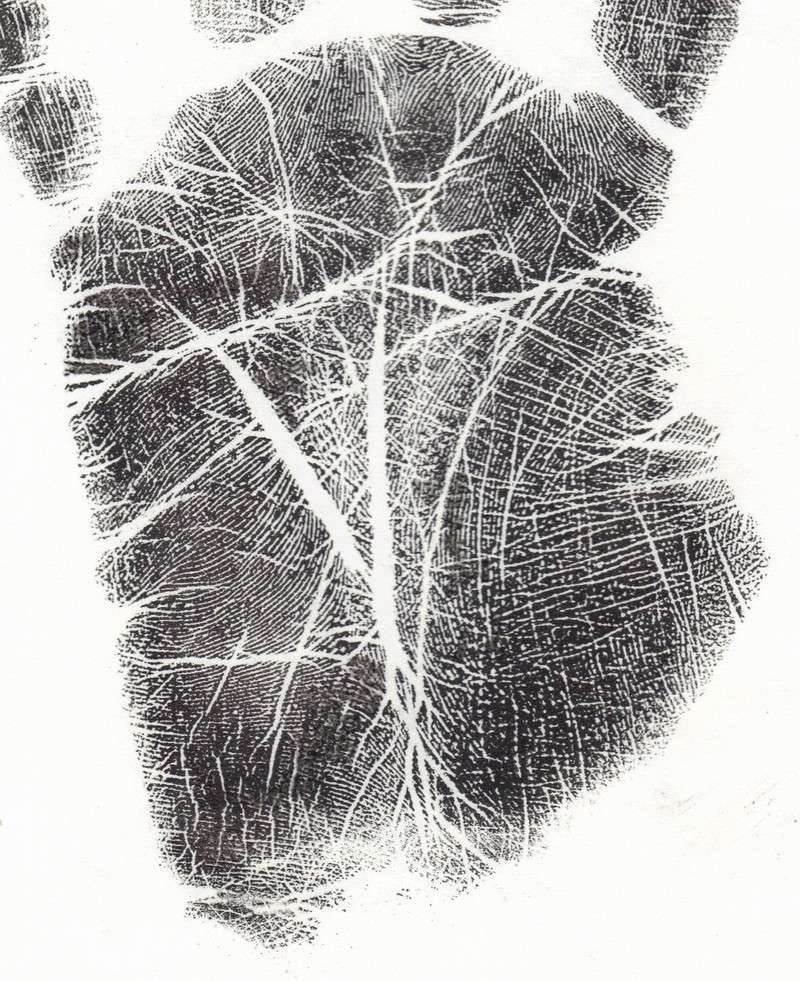
(both samples are female)
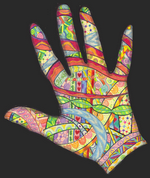
Patti- Posts : 3912
Join date : 2010-07-24
 Re: VII - REPORT: Korean researchers discovered the 'Suwon crease', only observed in males!
Re: VII - REPORT: Korean researchers discovered the 'Suwon crease', only observed in males!

female.
Would this qualify as the radial and ulnar suwon?

Patti- Posts : 3912
Join date : 2010-07-24
 Re: VII - REPORT: Korean researchers discovered the 'Suwon crease', only observed in males!
Re: VII - REPORT: Korean researchers discovered the 'Suwon crease', only observed in males!
Patti wrote:
If I'm following you right then the accessory crease that's on the radial side connects with the heart line and on the ulnar side connects with the head line, is a deep crease - not a fading out ending or fork/split. It appears to originate from the side of the hand, radial or ulnar and meets the other primary creases.
I've still seen this in both forms. I've seen it on the heart line often. I do use my magnifying glass to discern that a crease isn't simply a splitting branch but a 'touching' incoming crease.
Patti, I am not able to visualize what your described in your 1st alinea... but I notice again that you didn't mention the aspect of the creation of 'complete transversal constellation' of lines in the palm.
NOTICE: Just like both the simian line AND the Sydney line create a 'complete transversal constellation' in the palm... the 'Suwon crease' creates a likewise type of constellation.
By the way, do you understand this common characteristic between the simian line, Sydney line & 'Suwon crease'?
Additionallly, in your 2nd alinea you describe that you have 2 variants (you wrote: 'I have seen this in both forms') in mind... but from your words I can not destillate the two variants that you have mind.
I can only respond with: so far I think there is only one type of 'Suwon crease'... and for sure: it is rare!
(In the 4 samples that I am studying right now I have found it only 3 out of 274 male cases)
PS. Thanks for presenting your two examples...
 , but they confirm to me that so far you didn't understand the point of the 'complete transversing constellation'; but I will share my observations for these two examples...
, but they confirm to me that so far you didn't understand the point of the 'complete transversing constellation'; but I will share my observations for these two examples... - Your first example is not a 'Suwon crease' because there is no connection with the heart line => Therefore it doesn't have the 'complete transversal constellation'.
But I do understand why you presented this example: two head lines... and one is showing the tendency to create a connection with the heart line. IF the connection was present, then it could be described as a 'Suwon crease'... so while it is not a 'Suwon crease' you came very close in this example!
However...

- Your second example can simply be described as an 'incomplete Sydney line'!
Sorry, I don't understand why you are presenting this example... because obviously: there is only one head line present!!
- Your third example does have a double head line: both create 'incomplete Sydney lines'). But regarding the heart line... obviously it has a 'splitting' but the lower branch cannot be described as a head line. So, because of the presence of a connection with the upper head line... I could also describe this example as an 'incomplete simian line'.
Anyway Patti, despite that I can none of these 3 examples as a 'Suwon crease'... my observations might help you at least to understand the basic concept of that line a bit more.

 Re: VII - REPORT: Korean researchers discovered the 'Suwon crease', only observed in males!
Re: VII - REPORT: Korean researchers discovered the 'Suwon crease', only observed in males!
Last one for now - I'm thinking this radial crease might be considered too thin - or a branch, yet one doesn't join the heart line.
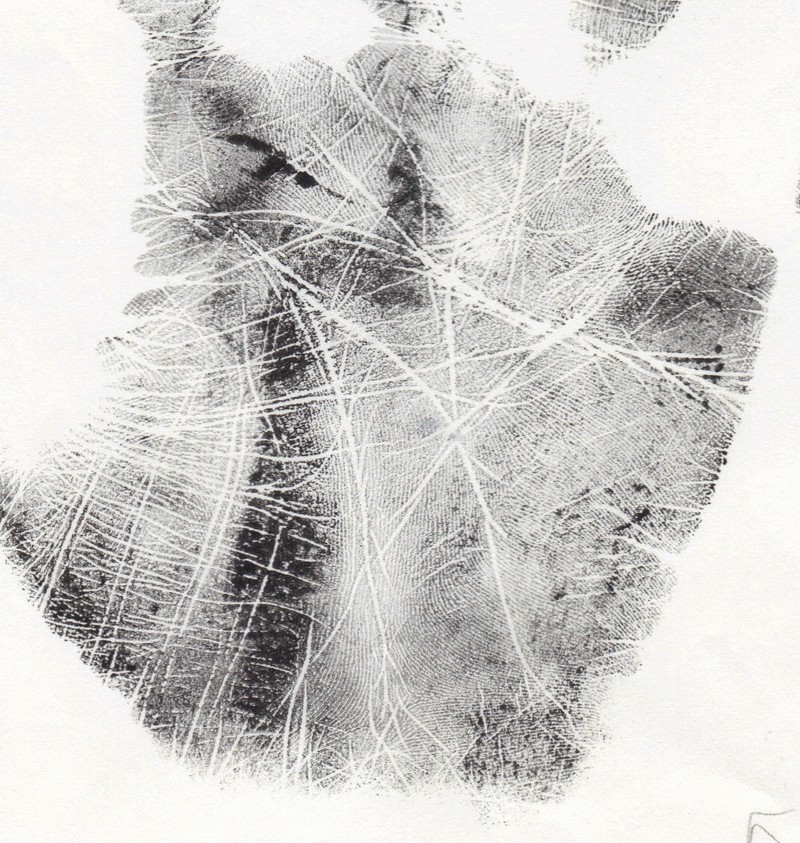
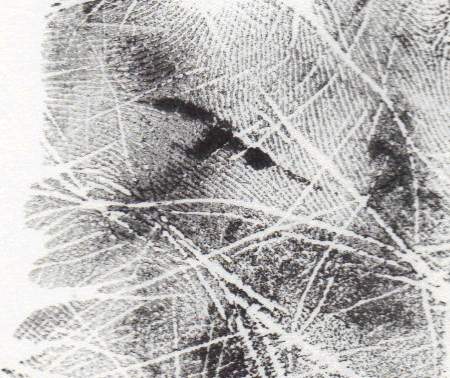

Patti- Posts : 3912
Join date : 2010-07-24
 Re: VII - REPORT: Korean researchers discovered the 'Suwon crease', only observed in males!
Re: VII - REPORT: Korean researchers discovered the 'Suwon crease', only observed in males!
Patti wrote:Thanks Martijn,
Last one for now - I'm thinking this radial crease might be considered too thin - or a branch, yet one doesn't join the heart line.
Hi Patti,
Sorry, this one can very accurately be described as a 'splitting heart line' - resulting in that the lower branch does create a 'complete transversal heart line'!!
However... again, a 'complete transversal heart line' concerns only one line involved; and therefore it does not relate to the 'Suwon crease' - where two different lines are involved: and both of these lines meet!.
 ... I hope that my responses to your examples will make you recognize what it takes to recognize a true 'Suwon crease'.
... I hope that my responses to your examples will make you recognize what it takes to recognize a true 'Suwon crease'. => See the 3 characteristics that I described in my first response to your input in this discussion!!
PS. By the way: yes, I can confirm your accessory observation: the width of the lower 'splitting' obviously doesn't resemble the structure of the head line. Which basically confirms that this is only a 'splitting heart line - with one transversal branch'.
 Re: VII - REPORT: Korean researchers discovered the 'Suwon crease', only observed in males!
Re: VII - REPORT: Korean researchers discovered the 'Suwon crease', only observed in males!
eg the difference between this
https://servimg.com/view/15498700/23
and this
http://acb.xmlink.kr/ArticleImage/1049ACB/acb-43-169-g003-l.jpg
oops sorry I messed up & posted links instead of images. Last link was supposed to go to picture D.
.
 Re: VII - REPORT: Korean researchers discovered the 'Suwon crease', only observed in males!
Re: VII - REPORT: Korean researchers discovered the 'Suwon crease', only observed in males!
What about this one Martijn?
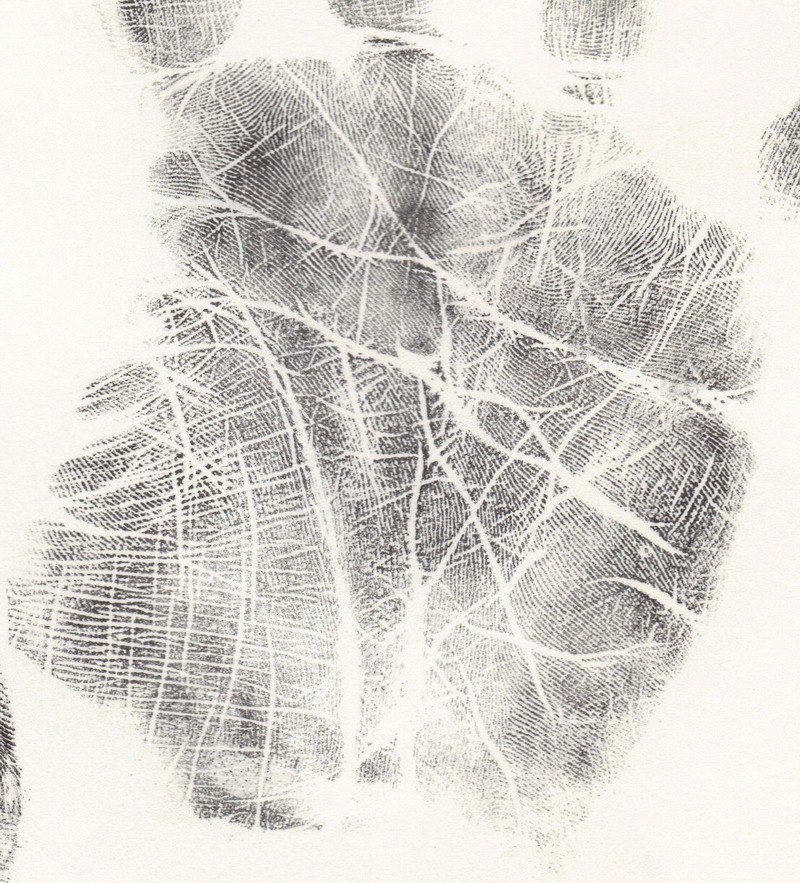

Patti- Posts : 3912
Join date : 2010-07-24
 Re: VII - REPORT: Korean researchers discovered the 'Suwon crease', only observed in males!
Re: VII - REPORT: Korean researchers discovered the 'Suwon crease', only observed in males!
Hi Lynn,Lynn wrote:Thanks for your input Patti & your responses Martijn. Like Patti I am also having some difficulty in defining this line / noticing it on hands. specifically - seeing the difference between split heartline where one branch connects to life/headline, and the true suwon - extra headline that connects to heartline.
eg the difference between this
https://servimg.com/view/15498700/23
and this
http://acb.xmlink.kr/ArticleImage/1049ACB/acb-43-169-g003-l.jpg
The basic difference between both examples can be recognized by considering the 'width' of the lines!
Again, one really NEEDS to consider the structure of the lines involved - and 'width' is of course a major aspect of the structure..
Lynn, can you confirm the following:
Do you recognize that in the Korean example the width of the 'Suwon crease' is COMPLETELY DIFFERENT from the heart line?
SUWON CREASE:

If you recognize that... then it is actually quite easy to notice that in Patti's example both branches of the heart line sort of have the same width, while the head line has a larger 'width'!
NOT A SUWON CREASE:

Can you confirm the difference between these 2 examples?
(So in these two cases the 'width' of the lines shows the difference - but in other cases it might be necessary to consider other aspects of the STRUCTURE of the lines involved)

Last edited by Martijn (admin) on Tue Nov 16, 2010 1:43 pm; edited 1 time in total
 Re: VII - REPORT: Korean researchers discovered the 'Suwon crease', only observed in males!
Re: VII - REPORT: Korean researchers discovered the 'Suwon crease', only observed in males!
Patti wrote:Hi Lynn! Thanks for being equally unsure!
What about this one Martijn?

Congratualations Patti - you finally found one!!
Yes, I would count your 5th example as a 'Suwon crease'!!
Why?
- First of all: see the likewise shape + structure in the head line!
- Second, additionally this line has a VERY STRONG thumb-side (radial) component, which is another typical characteristic of a 'Suwon crease'!
- Additionally, see also the position of the 'passion line' (which is not a requirement, but I think in quite some 'Suwon crease' one will notify a 'passion line' near the connection point).





 Re: VII - REPORT: Korean researchers discovered the 'Suwon crease', only observed in males!
Re: VII - REPORT: Korean researchers discovered the 'Suwon crease', only observed in males!
Martijn (admin) wrote:Hi Lynn,
The basic difference between both examples can be recognized by considering the 'width' of the lines!........
Can you confirm the difference between these 2 examples?
(So in these two cases the 'width' of the lines shows the difference - but in other cases it might be necessary to consider other aspects of the STRUCTURE of the lines involved)
OK so far I understand the difference in width of the two lines.
 Re: VII - REPORT: Korean researchers discovered the 'Suwon crease', only observed in males!
Re: VII - REPORT: Korean researchers discovered the 'Suwon crease', only observed in males!
Martijn (admin) wrote:Patti wrote:Hi Lynn! Thanks for being equally unsure!
What about this one Martijn?

Congratualations Patti - you finally found one!!
Yes, I would count your 5th example as a 'Suwon crease'!!
Why?
- First of all: see the likewise shape + structure in the head line!
- Second, additionally this line has a VERY STRONG thumb-side (radial) component, which is another typical characteristic of a 'Suwon crease'!
- Additionally, see also the position of the 'passion line' (which is not a requirement, but I think in quite some 'Suwon crease' one will notify a 'passion line' near the connection point).





Ok instantly confused again! How is the width of this Suwon line different to width of main heart line? how does it differ from a forked heart line? Since when did the passion line become a factor in the Suwon line? (was this mentioned before?)

 Re: VII - REPORT: Korean researchers discovered the 'Suwon crease', only observed in males!
Re: VII - REPORT: Korean researchers discovered the 'Suwon crease', only observed in males!
Lynn wrote:


Lynn, remember, I described: one really needs to consider the STRUCTURE of the lines involved... not 'width' only!!
However, also in Patti's 5th example is an unusual characteristic noticable:
Lynn, have you noticed at the thumb-side of the lower branch the VERY PRONOUNCED WIDTH? Obviously, that doesn't look like a normal shape for a 'splitting heart line' to end!!
Actually, that PRONOUNCED part of the line could very well be recognized as the BEGINNING of the 'Suwon crease'!
And in this case, one could even say that the 'Suwon crease' fuses with... the lower branch of the 'splitting heart line' - at the point where a vertical line appears to end in the lower branch!!

 Re: VII - REPORT: Korean researchers discovered the 'Suwon crease', only observed in males!
Re: VII - REPORT: Korean researchers discovered the 'Suwon crease', only observed in males!
Martijn (admin) wrote:Patti wrote:Hi Lynn! Thanks for being equally unsure!
What about this one Martijn?

Congratualations Patti - you finally found one!!
Yes, I would count your 5th example as a 'Suwon crease'!!
Why?
- First of all: see the likewise shape + structure in the head line!
- Second, additionally this line has a VERY STRONG thumb-side (radial) component, which is another typical characteristic of a 'Suwon crease'!
- Additionally, see also the position of the 'passion line' (which is not a requirement, but I think in quite some 'Suwon crease' one will notify a 'passion line' near the connection point).








That was the 138th hand print or 69 pairs of hands. Sort of matching your 2%
I did notice the passion line. You had mentioned it when you were going through your 200 male samples. Note also the deep crease coming in from the ulnar side. Doesn't connect, but it's not all that far off either and unusually deep. Perhaps this is why they included the ulnar crease - as it perhaps is part of a combination of features.
This is a female sample.

Patti- Posts : 3912
Join date : 2010-07-24
 Re: VII - REPORT: Korean researchers discovered the 'Suwon crease', only observed in males!
Re: VII - REPORT: Korean researchers discovered the 'Suwon crease', only observed in males!
Interestingly these are from my palmistry classes from over 20 years ago. They are filed according to the classes. In one small class there are two of these and one simian. Interesting how like people often group together.
This sample is female. Note the passion line and ulnar crease. I included the fingers to show the fingerprint of the ring finger.
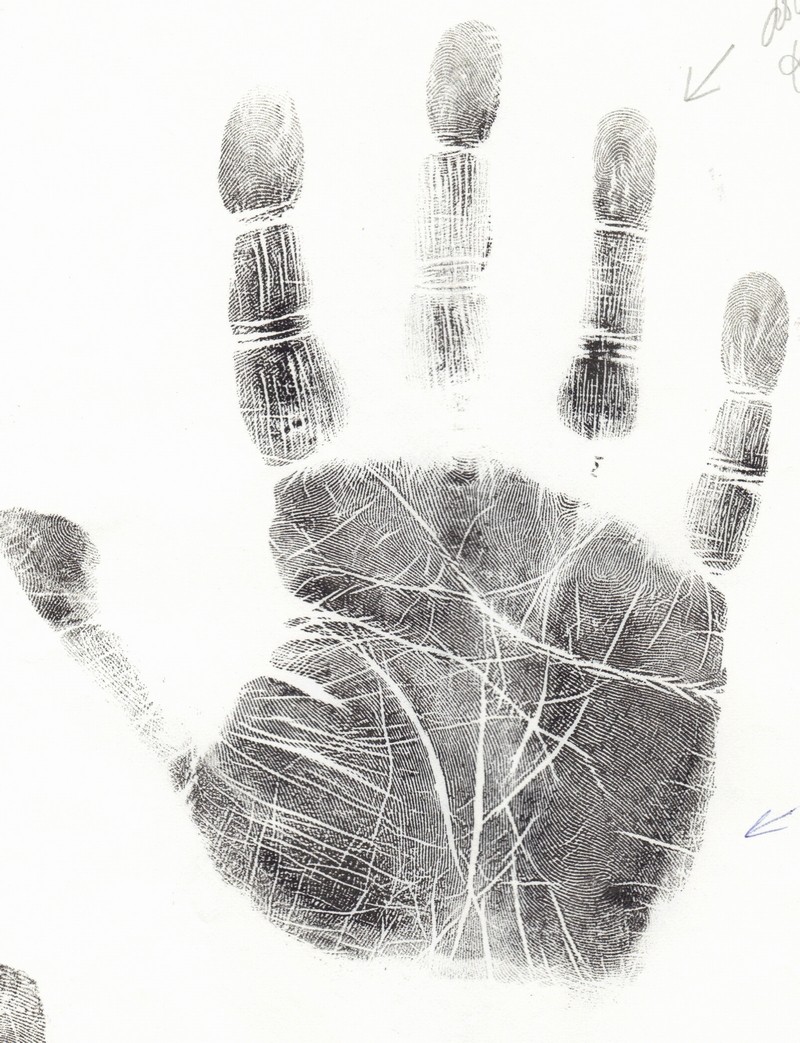


Patti- Posts : 3912
Join date : 2010-07-24
 Re: VII - REPORT: Korean researchers discovered the 'Suwon crease', only observed in males!
Re: VII - REPORT: Korean researchers discovered the 'Suwon crease', only observed in males!
Female:
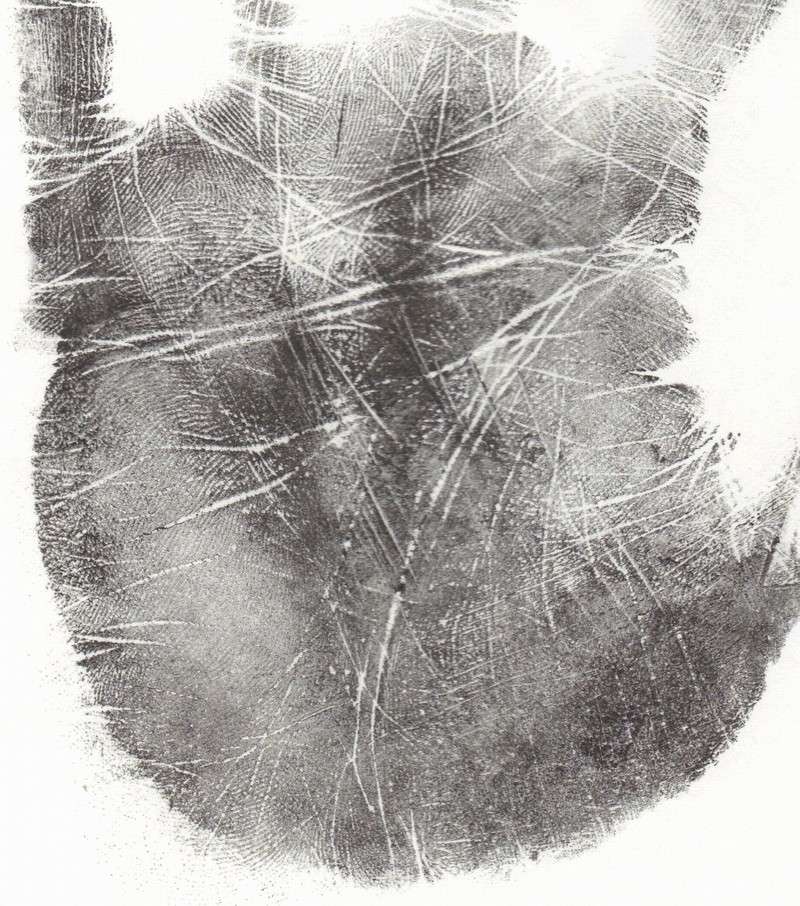

Patti- Posts : 3912
Join date : 2010-07-24
 Re: VII - REPORT: Korean researchers discovered the 'Suwon crease', only observed in males!
Re: VII - REPORT: Korean researchers discovered the 'Suwon crease', only observed in males!
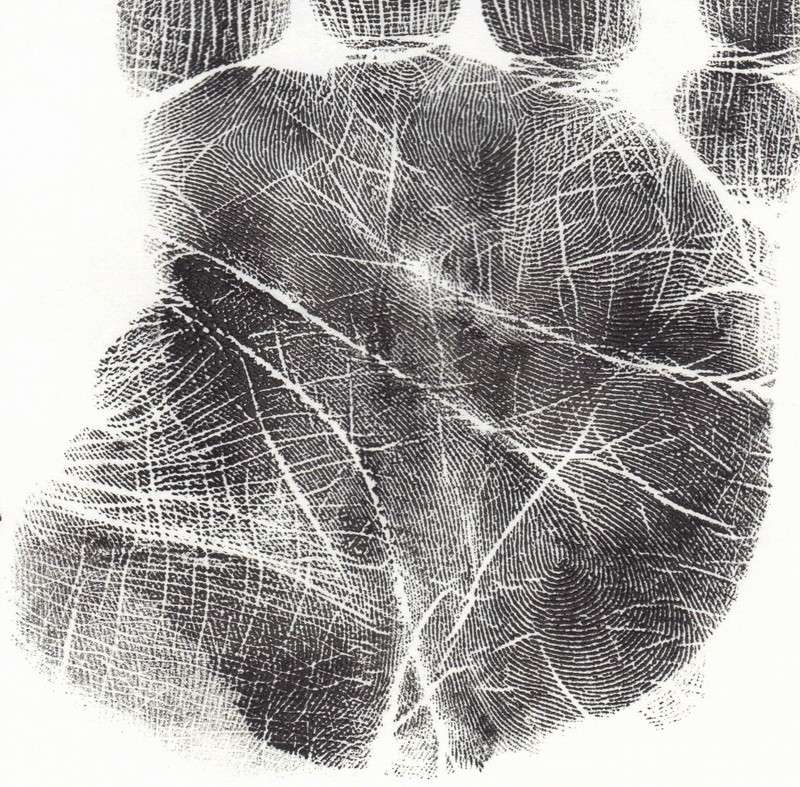

Patti- Posts : 3912
Join date : 2010-07-24
 Re: VII - REPORT: Korean researchers discovered the 'Suwon crease', only observed in males!
Re: VII - REPORT: Korean researchers discovered the 'Suwon crease', only observed in males!
Can we say that I *discovered* the first female Suwon in the world?


Patti- Posts : 3912
Join date : 2010-07-24
 Re: VII - REPORT: Korean researchers discovered the 'Suwon crease', only observed in males!
Re: VII - REPORT: Korean researchers discovered the 'Suwon crease', only observed in males!


female sample

Patti- Posts : 3912
Join date : 2010-07-24
 Re: VII - REPORT: Korean researchers discovered the 'Suwon crease', only observed in males!
Re: VII - REPORT: Korean researchers discovered the 'Suwon crease', only observed in males!
Patti wrote:Ok, by golly I think I've got the idea.
Interestingly these are from my palmistry classes from over 20 years ago. They are filed according to the classes. In one small class there are two of these and one simian. Interesting how like people often group together.
This sample is female. Note the passion line and ulnar crease. I included the fingers to show the fingerprint of the ring finger.
Sorry Patti, I don't know if you got the idea.
This example obviously doesn't have the 'complete transveral constellation': I see only that the line trie to make a connection with the start of the life/head line via some minor lines.
I would say: definitely not a 'Suwon crease'.
 Re: VII - REPORT: Korean researchers discovered the 'Suwon crease', only observed in males!
Re: VII - REPORT: Korean researchers discovered the 'Suwon crease', only observed in males!
Patti wrote:Now for attempts at identifying the ulnar Suwon:
Patti, this could at best be described as an incomplete Sydney line variant (but I would not count this one as a complete Sydney line).
Again, the typical 'ulnar lines' do not relate to the 'Suwon crease': the researchers did not make this connection either.
Sorry, the 'ulnar Suwon' doesn't exist (because likewise 'complete' variants can simply be described as a Sydney line).
 Re: VII - REPORT: Korean researchers discovered the 'Suwon crease', only observed in males!
Re: VII - REPORT: Korean researchers discovered the 'Suwon crease', only observed in males!
Patti wrote:The beginning of the ulnar crease is similar to the beginning of the heart line in it's criss crossing:
female sample
Sorry again Patti,
This is a Sydney line - definitely not a 'Suwon crease' either.
PS. I notice in this comment (and in earlier comments) that you keep talking about 'ulnar creases', but the presence of those line is not a characteristic that relates to the 'Suwon crease'.
 Re: VII - REPORT: Korean researchers discovered the 'Suwon crease', only observed in males!
Re: VII - REPORT: Korean researchers discovered the 'Suwon crease', only observed in males!
Patti wrote:Martijn, I do believe like you there is some connection to the passion line. I realize this isn't exactly a Suwon crease, but check out the combined features. Transverse heart line. Passion line. Rising line to Passion Line. Ulnar crease.
Female:
Yes Patti,
I recognize how a 'passion line' could sort fuel the development of another line: typically the lower branch of a splitting heart line.
PS. In this example, I basically see only a very long heart line... but it's not a 'complete transversal heart line'. And because of the missing of a potential second head line, this case is unrelated to the 'Suwon crease'.
By the way, in this case the very long 'passion line' does not fuel the development of another line: I would describe it only as an extraordinary long 'passion line'.
 Re: VII - REPORT: Korean researchers discovered the 'Suwon crease', only observed in males!
Re: VII - REPORT: Korean researchers discovered the 'Suwon crease', only observed in males!
Patti wrote:p.s.:
Can we say that I *discovered* the first female Suwon in the world?

Sorry Patti, I though I already mentioned that I found myself as well a female 'Suwon crease'. (See below + I have described some of the details)
Can we agree that the example below propably is a 'Suwon crease'?
However, obviously... we are still struggling with how to define the 'Suwon crease' - but I think we can safely assume that it can be found in female hands as well.
(Possibly at a later stage we may need to adapt some of our observations regarding how to recognize a 'Suwon crease')
EXAMPLE OF A 'SUWON CREASE': Just like in the example of the Korean researchers the lower branch in this example is much stronger than the upper branch - and the lower branch even appears to be slightly stronger than the center part of the heart line. And it could be described as an extra line. The combination of these 3 elements makes me think that it could very well be described as a Suwon crease.
PS. This is a Dutch university student.
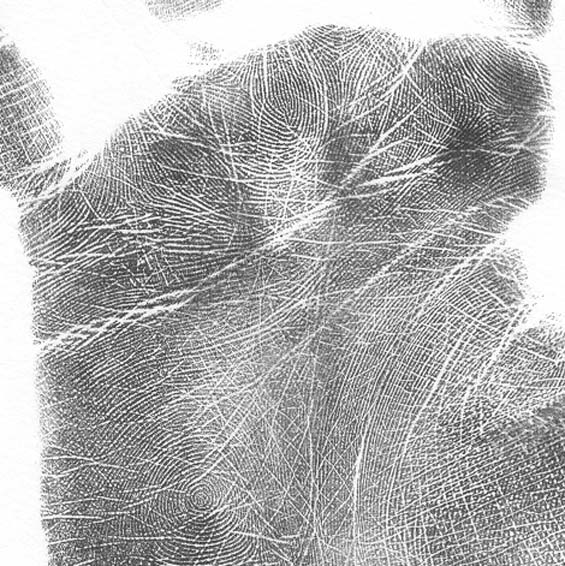
 Re: VII - REPORT: Korean researchers discovered the 'Suwon crease', only observed in males!
Re: VII - REPORT: Korean researchers discovered the 'Suwon crease', only observed in males!
Okay, I see your point. It helps to read the literature too and not just look at the illustrations
 (referring to me
(referring to me I thought from the illustrations and your early remarks that this Suwon crease was a transversal crease created by an accessory crease. The accessory crease being similar to the heartline when it's ulnar and attached to the end of the head line and similar to the quality of the headline when attached to the heartline.
Your female example's heart line looks like it's split rather than being met by a strong inward bound crease. The quality of the accessory crease is not similar to the head line. It also fades considerably at the radial edge.
I see a small flaw right at the start of their study! They washed the hands with soap prior to printing. Then they had to recategorize prints that were not of quality. Female hands and males with finer skin lose their distinct printing quality right after being washed. (page 1 under Materials & Methods)
I'm going to take the time to read the abstract intently before I continue with this conversation.

Patti- Posts : 3912
Join date : 2010-07-24
 Re: VII - REPORT: Korean researchers discovered the 'Suwon crease', only observed in males!
Re: VII - REPORT: Korean researchers discovered the 'Suwon crease', only observed in males!
Patti wrote:Good Morning Martijn!
Okay, I see your point. It helps to read the literature too and not just look at the illustrations(referring to me
)
I thought from the illustrations and your early remarks that this Suwon crease was a transversal crease created by an accessory crease. The accessory crease being similar to the heartline when it's ulnar and attached to the end of the head line and similar to the quality of the headline when attached to the heartline.
Your female example's heart line looks like it's split rather than being met by a strong inward bound crease. The quality of the accessory crease is not similar to the head line. It also fades considerably at the radial edge.
I see a small flaw right at the start of their study! They washed the hands with soap prior to printing. Then they had to recategorize prints that were not of quality. Female hands and males with finer skin lose their distinct printing quality right after being washed. (page 1 under Materials & Methods)
I'm going to take the time to read the abstract intently before I continue with this conversation.
Good morning Patti!!
Aha... I am glad to hear that you now recognize how some of your problems were directly the result of not reading the Korean paper. Thanks for letting us know.
Regarding 'washing hands', sorry I can not confirm that this is a flaw. Actually, washing hands will avoid that the result of a print will be influenced by hand-cream, etc!! So, one could easily REVERSE your argument! What you described as a 'small flaw'... I would prefer to say that this actually confirms that the researchers used a professional approach. By the way: yes, I am aware that 'washing hands' sometimes has a negative effect on print quality - especially when water-based 'paint' is involved! But just like you described: it's only a temporary effect and one should not overestimate the effect. I assume that they used the most proper materials (including fingerprint ink - not water-based 'paint'), and by fact: I see no reason at all to get worried about the effect on the printing-results.
Finally, regarding your observation:
"Your female example's heart line looks like it's split rather than being met by a strong inward bound crease. The quality of the accessory crease is not similar to the head line. It also fades considerably at the radial edge."
Sorry, but I think this argument is actually much more applicable to the no.5 print that you presented earlier in this discussion. Are you aware of this?
First of all, for recognizing a 'Suwon crease' it is not necessary to see two headlines with a likewise 'shape'. Yes, if the extra crease shows a similarity with the 'shape' of the head line... then that becomes an argument. But most important is that the extra crease shows an usual characteristic which can be associated with the presence of a second head line (but there is no need to assume that it MUST look like the head line).
Second, when looking at the details in my example, I have 2 observation-based arguments that my example can not be described as a 'splitting heart line' (see the picture below):
1) There is a line which clearly 'cuts' through the heart line (see the yellow line - and the first orange line above this yellow line might have the same characteristic!!);
2) The path of the heart line doesn't show any change at all: it follows a perfectly 'smooth' curve. So formally, there is no 'splitting' at all - only at the distal part of the heart line one can observe a clear 'splitting'.
I hope these observations make sense for you!?

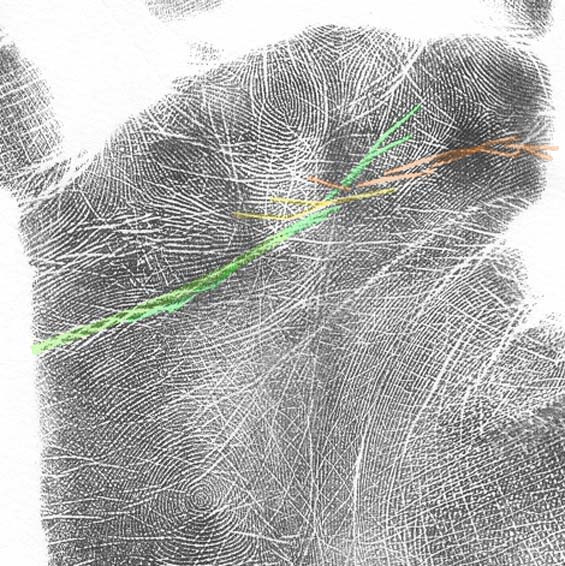
Page 2 of 11 •  1, 2, 3, ... 9, 10, 11
1, 2, 3, ... 9, 10, 11 
 Similar topics
Similar topics» Is this Suwon Crease or Sydney Line?
» REPORT - Predicting destiny from your hands & DNA!!
» CENTURIES-OLD TRADITIONAL PALMISTRY THEORIES PROVED WRONG?
» BLOG REPORT: "Little hands" (Down's syndrome)
Modern Hand Reading Forum - Discover the language of your hands: palm reading & palmistry forum! :: III - MODERN HAND READING - Various systems for reading hands! :: IIIa - Modern Palmistry: general topics, questions :: IIIj - News that relates to the activity of reading hands






» Teacher square on my Jupiter mount
» Handreading International Conference 2024
» Can anyone read it for me?
» Are there any signs in the hands that you are a twin flame?
» Square on Marriage line
» Cross in mount Jupiter
» clinodactyly: top phalanges bending towards Mercury finger
» Can anybody please read this hand
» Nisha Ghai
» Absolutely non-sense career till now
» Fate Destiny Line -
» VIII - Palmistry books TOP 100 - listed by 'Amazon Sales Rank'!
» Stewart Culin - Palmistry in China and Japan
» Herbert Giles - Palmistry in China